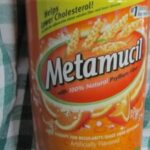While many people monitor their intake of fat, carbohydrates and other less desirable sources of calories, far fewer keep track of the beneficial substances they consume on a daily basis. Fiber, for example, is an essential part of your diet, whether it is taken in fruits, vegetables and other foods or in supplements.
Certain types of soluble fiber, such as psyllium, might be easier taken in Metamucil, while other types of fiber can be found in the foods you likely eat every day. Maintaining the recommended fiber intake of 20-30 grams can keep you healthy, prevent heart disease and bestow numerous other benefits.
1. Split Peas
Split peas and other legumes are extraordinary sources of fiber, according to the Mayo Clinic. One cup of split peas contains approximately 16.3 grams of fiber, which is around 65 percent of the recommended daily value. When cooking any form of dried peas, it is important to wash them thoroughly, after which they can be enjoyed in a number of delicious recipes.
2. Lentils
With about 15.6 grams of fiber per cup, cooked lentils are another excellent source. Frequently found in soups, lentils are also high in iron and protein, and are favorable for cooking because they absorb flavors from sauces, broths and other foods. Lentils are healthy for your heart not just because of their fiber content, but also because they contain high levels of magnesium, which is a strong calcium channel blocker, according to the USDA.
3. Artichokes
Containing 10.3 grams of fiber per artichoke, this is a great source of fiber and potassium, according to the USDA. This is an extremely versatile food found in everything from herbal tea to pizza to seafood dishes. It is also thought to aid in lowering cholesterol.
4. Black Beans
Cooked black beans contain approximately 15 grams of fiber per cup, according to the Mayo Clinic, and are common side dishes in numerous cultures. You can find them in restaurants as well as grocery stores, so they are easily attainable, and as long as you don’t load them with salt or cook them in a high-carb sauce, they are extremely healthy all around.
5. Lima Beans
Another entry in the legume category, lima beans contain about 13.2 grams of fiber per cup. They are an excellent addition to your diet if you enjoy foods with lots of texture and flexibility, as cooked lima beans can be added to soups, casseroles and other dishes, as well as work as a stand-alone side dish.
6. Peas
Peas, like corn, are a starch as well as a vegetable, so they should be used in moderation in comparison to other non-starchy vegetables. However, they do contain 8.8 grams of fiber per cup and are therefore an excellent choice if you want to add a heart-healthy food to your plate. Peas are often mixed with corn in side dishes to add a sweet flavor to the dish, though they are also commonly included in soups, casseroles and pastas for flavor and texture.
7. Vegetarian Baked Beans
Without any meat additives, baked beans contain 10.4 grams of fiber in each cup and are staples in many American households. This is an extremely inexpensive source of fiber, and they are particularly beneficial in households with children, as kids don’t protest baked beans as much as they do other foods with high levels of fiber.
8. Raspberries
Fruit lovers will be pleased to know that raspberries are great sources of fiber, with about 8 grams per cup. In some areas of the world, raspberries can be found growing in yards and large parcels of land, though they are also readily available at grocery and whole foods stores. Enjoy raspberries as a healthy, high-fiber snack or even as dessert after a meal.
9. Bran and Fiber-Rich Cereals
Certain types of cereals are also excellent sources of fiber, according to Tufts University. Some can contribute up to 14 grams of fiber per half-cup serving. Sprinkle some raspberries over your cereal in the morning, and you’ve already taken care of a significant portion of your fiber needs for the day.
10. Whole-Wheat Spaghetti
Italian-food connoisseurs can increase the heart-healthiness of their diets by consuming whole-wheat spaghetti and whole-wheat pastas. With 6.2 grams of fiber per cup, this is not the highest source of fiber, but it will round out an otherwise healthy diet. You can increase your fiber intake by adding peas, lentils and other fiber sources to your spaghetti if you aren’t getting sufficient fiber elsewhere.
Sources:
http://www.mayoclinic.com/health/high-fiber-foods/NU00582
http://www.nal.usda.gov/fnic/foodcomp/cgi-bin/list_nut_edit.pl
http://www.tufts.edu/med/nutrition-infection/hiv/health_fiber.html





